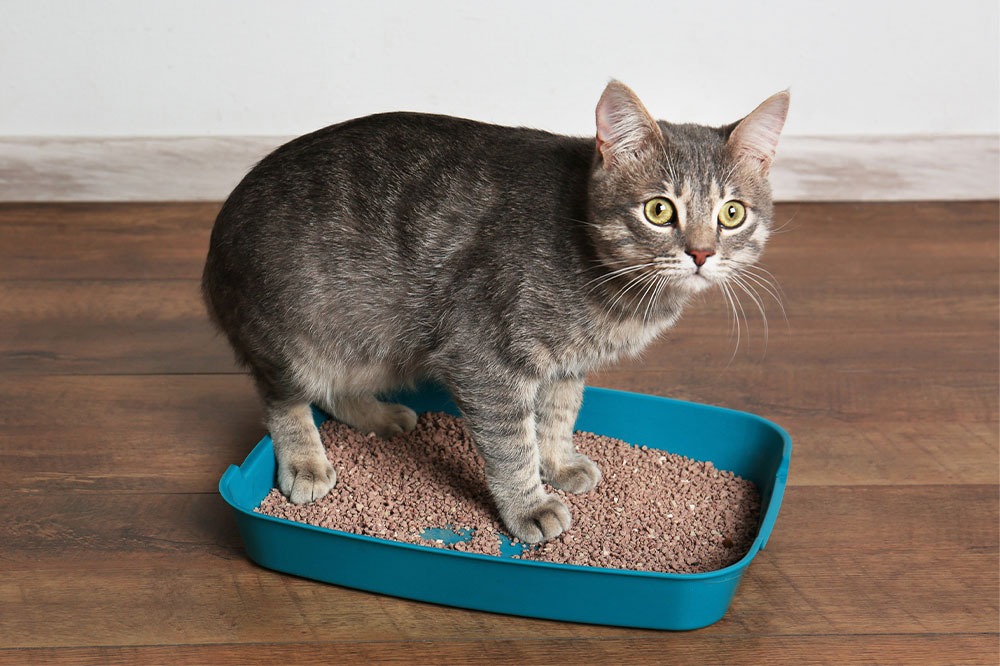
Top 7 tips for toilet-training cats
Cat parents know the struggle of keeping a litter box clean and cleaning tracked litter throughout the house. This is why many choose to toilet-train their pets to remove the need for a litter box completely. By training one’s pet to do their business in a toilet, cat parents create a safe and hygienic solution for their pet. That said, toilet training should be done gradually, taking about six weeks.
Here are a few tips to toilet train one’s cat:
1. Purchasing the right litter tray
The first tip to toilet-training a feline is to purchase the right litter tray. The idea of purchasing the right litter tray is to make cats comfortable with doing their business at a designated place. Gradually, parents can reinforce their behavior and train them to use the toilet.
Most cats prefer two trays. Getting the right litter trays can make or break the experience for cats when they need to go. For example, if the walls of the tray are very high, then the cat will not be able to climb into it easily. Cat parents should also purchase litter boxes with enough room for a cat to move around and find a comfortable “spot” inside. Those who have just adopted or rescued a pet should avoid purchasing litter boxes with doors or steps. They may fear that the litter boxes are meant to trap them.
2. Preparing a designated bathroom for cats
When a cat is new to a house, its caretaker must prepare a designated bathroom for it to poop and pee there comfortably. For that purpose, the location of the bathroom must be such that it is easily accessible to the cat. Pet caretakers or parents can move the litter box near the toilet seat in the bathroom.
3. Raising the height of a litter box
As implied earlier, the eventual step for owners is for their cats to use the toilet without any difficulties. Therefore, they must train their cats by slowly and surely raising the height of the designated litter box. At first, cats may be reluctant to jump up to relieve themselves, but later, they will get used to the height. Ultimately, they will feel comfortable jumping up atop the toilet seat and doing their business there.
Eventually, pet parents will also need to buy a few training supplies to make their cats adapt and use the designated restroom facilities. These supplies include a cat training seat with a medium-sized hole, which can be placed over a toilet. Parents need to progressively increase the size of this hole so that the cat eventually defecates directly into the toilet instead of a box or litter tray.
4. Reinforcing good habits and behavior
Cats are very habit-oriented and like routines. Additionally, they are quite receptive to appreciation and encouragement. Therefore, a particularly effective tip to toilet-train cats is reinforcing and promoting good behaviors and actions. A little treat every time a cat takes a trip to the toilet is a good way to reinforce the habit. There are other, more systematic ways to reinforce good sanitation habits in cats.
One must also understand that not all cats learn to use the toilet in six weeks. Many cats are not well suited to be toilet trained in that time frame and require more weeks. This is why caretakers must let their pets use their litter trays if they get too anxious about using the toilet. The idea should be to gently transition the pet to using a toilet. Caretakers should gently encourage their cats not to shout or raise their voices, even if their pet gravitates toward the litter tray. Toilet training is a process that takes time.
Punishing cats is a massive no-no, as that creates fear in their minds about using the litter tray and the toilet. Cats who fear their caretakers and parents will seek other, safer places to relieve themselves in the house.
Suppose one’s cat does relieve itself in some corner of the house. Pet parents should slowly pick their cat up, place it on the toilet seat made for them, and pat it.
5. Cleaning up messes quickly
Parents must clean and deodorize the soiled spot when a cat defecates or urinates anywhere. If this is not done, a cat may associate toilet time with the random spot. Because of this association, cats will urinate or defecate in the same spot out of habit again and again.
6. Familiarizing oneself with the downsides of training
Toilet training can be difficult and emotionally taxing for both the caretakers and their pets. Most people do not get it right in their first few attempts. A pet parent’s or caretaker’s relationship with their cat hinges on trust and appreciation. Therefore, one must not feel bogged down or defeated when the training is not going as per their plan. Instead, people need to be positive and optimistic and, more importantly, keep doing the right things until their cats finally start using the toilet.
7. Keeping the litter box clean
Cleanliness is associated with good health and hygiene, two things that cats are very particular about. If a feline sees that its designated poo zone is not clean or that it reeks of excreta, then it will end up doing its business in other areas of its house. Cleaning and deodorizing a litter box and the toilet is necessary.


